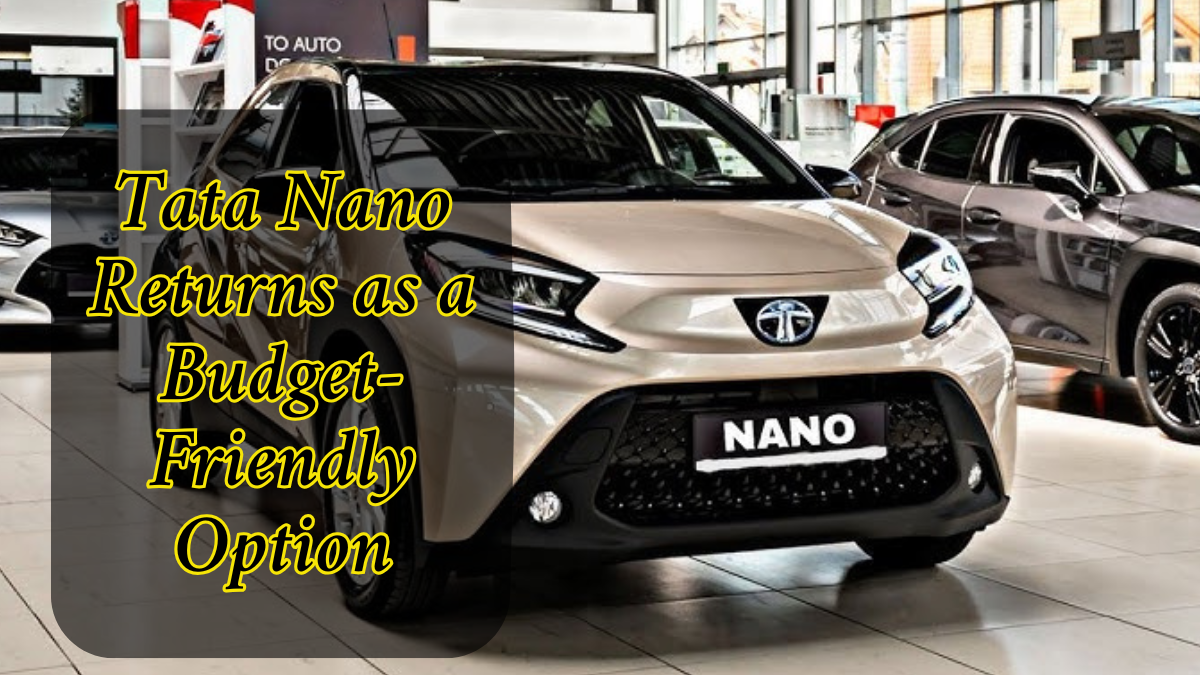The Tata Nano wasn’t just a car; it was a bold statement in automotive innovation. Launched in 2008 by Tata Motors, the Nano was billed as the world’s most affordable car. With a launch price of just ₹1 lakh, it aimed to put a roof over the heads of millions of Indian families still relying on two-wheelers.

Despite its small size and minimalistic design, the Nano promised something revolutionary: safe, four-wheeled personal transport for the common man. Its journey was filled with highs and lows, but its impact on the automobile industry and the narrative around low-cost transportation cannot be ignored.
Table of Contents
Summary Table Of Tata Nano

Item |
Details |
|---|---|
Launch Year |
2008 |
Starting Price |
₹1 lakh (approx. $2,000 at launch) |
Engine |
624cc Petrol Engine |
Mileage |
20–25 km/l |
Seating Capacity |
4 persons |
Notable Features |
Compact size, good fuel economy, later variants had AC |
Production Ended |
2020 |
Official Website |
What Made the Tata Nano Special?
The Nano was designed with a single focus: affordability. Tata Motors stripped down every aspect of a traditional car to its essentials:
- A compact design for maneuvering city traffic
- Lightweight materials to reduce costs
- A modest 624cc petrol engine
- Basic interiors with optional upgrades in higher variants
By making smart design and engineering choices, Tata Motors was able to achieve an industry-first price point. This wasn’t just about saving money—it was about giving millions their first chance at car ownership.
Key Features of the Tata Nano
Though basic in its early days, the Nano evolved quickly. Key specifications included:
- Engine: 624cc twin-cylinder petrol
- Mileage: Around 20–25 km/l
- Seating: Four seats, with reasonable headroom and legroom for a car of its size
- Size: Ultra-compact, ideal for dense urban environments
Later versions introduced:
- Air conditioning
- Power windows
- Music system
- Improved interiors and color options
This gradual upgrade strategy kept the price in check while offering more comfort for buyers.
Why the Nano Struggled Despite Its Promise
While the Nano had a groundbreaking concept, it faced several hurdles:
- Perception Problem: It was marketed as the “world’s cheapest car,” which many equated with “low quality.”
- Safety Concerns: A few incidents involving fire raised concerns, though Tata addressed them with engineering fixes.
- Changing Aspirations: As the economy grew, many consumers opted to stretch their budgets for larger, more feature-rich cars.
The Nano was a good product in the wrong narrative. In a country where a car is a status symbol, calling something “cheap” turned out to be a branding misstep.
End of the Road: Production Stopped in 2020
Despite continuous updates, sales never took off. After a steady decline in demand, Tata Motors discontinued the Nano in 2020. The car that once made global headlines for its affordability quietly exited the market.
Yet, its significance in automotive history remains. The Nano became a case study in cost engineering and consumer psychology. It also showed that innovation is about more than technology—it’s about knowing what customers truly value.
A Look at the Tata Nano’s Specifications
Feature |
Specification |
|---|---|
Engine |
624cc petrol |
Transmission |
Manual (4-speed) |
Mileage |
20–25 km/l |
Seating Capacity |
4 |
Boot Space |
80 liters |
Fuel Tank Capacity |
15 liters |
Top Speed |
Around 65–70 km/h |
Turning Radius |
4 meters |
Ground Clearance |
180 mm |
Weight |
600–635 kg |
Suspension |
Independent, front and rear |
Dimensions |
3099mm L x 1495mm W x 1652mm H |
Safety Features |
Seat belts, optional driver airbag |
Infotainment |
Basic audio system in higher variants |
Lessons from the Nano Legacy
- Price isn’t everything – Emotional value and perception can override practical benefits.
- Marketing matters – The way a product is positioned plays a crucial role in its success.
- Innovation needs alignment – What’s technically brilliant may not always resonate with the target audience.
The Tata Nano’s story is not one of failure but of misaligned expectations. Its contribution to the conversation around affordable mobility is undeniable.
Frequently Asked Questions (FAQs)
Q: Why was the Tata Nano so affordable?
A: Tata Motors used cost-effective materials, a small engine, and a minimalist design to drastically cut production costs. Strategic supply chain management also helped reduce expenses.
Q: Was the Tata Nano a safe car?
A: Later versions of the Nano improved safety features, but its small size and basic frame couldn’t match the crash resistance of larger vehicles. It was safer than a two-wheeler but not ideal for highway collisions.
Q: What went wrong with the Nano?
A: The term “cheap car” hurt its image. Many consumers preferred spending a bit more for a car that looked and felt more aspirational. Additionally, limited marketing focus on value and innovation failed to change perceptions.
Q: Can I still buy a Tata Nano?
A: New units are no longer in production, but pre-owned Tata Nanos are available through used car dealers and online platforms.
Q: Are spare parts and service still available?
A: Yes, Tata Motors still supports existing Nano owners with spare parts and service through its authorized network.
Final Thoughts
The Tata Nano was more than a budget vehicle—it was a social mobility project. Though it didn’t succeed commercially, it sparked a global conversation on how automakers can innovate for the masses. As India continues to explore affordable electric mobility, the spirit of the Nano lives on: mobility for all, within reach.
Visit Tata Motors for more on current models and innovations.
For More Information Click Here










